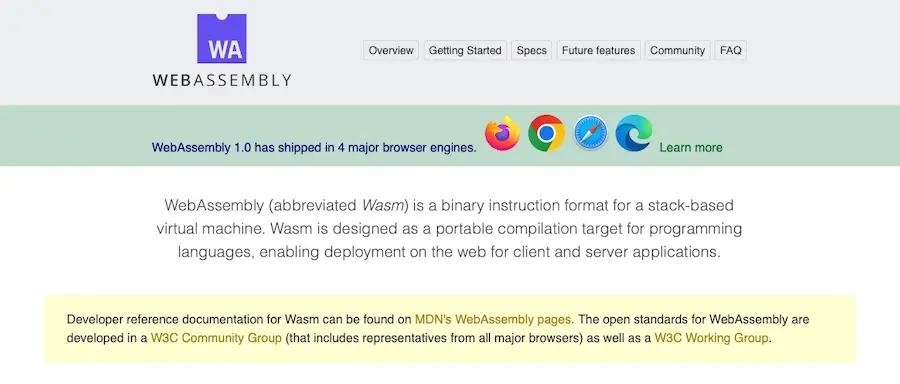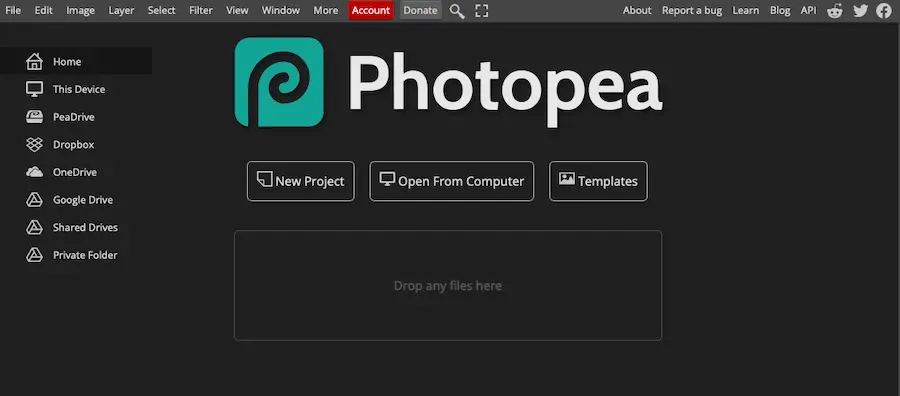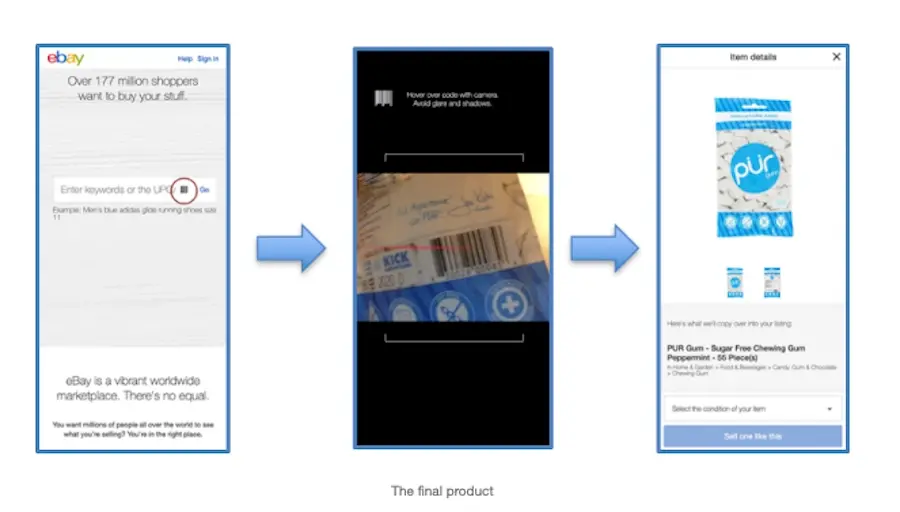If you're unfamiliar with WebAssembly, now's the time to get acquainted. It's a paradigm-shifting force in the web development universe, promising to revolutionize the way we conceive and construct web applications.
But let's cut to the chase: What on earth is WebAssembly? And how does it work?
That will be our primary focus here today: talking about what WebAssembly is, how it works, and why it's so important for you to learn.
What is WebAssembly?

Imagine if we had a fourth member of the tried and true web development team -- a silent powerhouse that complements the traditional trifecta of HTML, CSS, and JavaScript.
Well, that's exactly what WebAssembly is. Often called by its shorter, funkier moniker "wasm", WebAssembly is a low-level binary instruction format designed to be compact and efficient.
But where did it come from, you might ask?
Born in 2015, WebAssembly is the brainchild of the World Wide Web Consortium (W3C), the main international standards organization for the web. It wasn't a solo project, though.
Developers from industry behemoths Mozilla, Google, Microsoft, and Apple all contributed to its creation.
However, contrary to what you might think, it isn't here to usurp JavaScript's throne. Instead, it's designed to work in harmony with it, enhancing performance in areas where JavaScript might not be the star performer.
What Sets WebAssembly Apart?
At first glance, you might think WebAssembly is just another cog in the web development machine. However, dig a little deeper and you'll find it possesses two key superpowers: breakneck execution speed and unparalleled language independence.
Execution Speed
We've all been there - you click on a web page, and it feels like you're waiting for the stars to align before it finally loads. WebAssembly is actually instrumental in remedying this, however.
Unlike JavaScript, which uses a text format, WebAssembly uses a binary format. Now, in plain English, what that means is it can be parsed (read by the browser) and executed a lot faster than JavaScript. This translates into lightning-quick page loads and a far smoother, more enjoyable user experience.
And since we're in an era where site load speed is essential, the value here becomes even more important.
Language Independence
WebAssembly brings significant flexibility to the table. It doesn't care what language developers use. Whether you're a fan of the power of C, the simplicity of C++, the safety of Rust, or others, WebAssembly doesn't discriminate.
You can write your code and then compile it into WebAssembly. This freedom opens up a world of possibilities, allowing for the use of the web browser as a platform for a multitude of applications that were previously either too performance-intensive or couldn't be translated into JavaScript easily.
Understanding the WebAssembly Process
Armed with an understanding of WebAssembly's unique attributes, let's dive into the deep end to uncover how it works. This process spans from writing the code to its eventual execution.
Writing the Code
WebAssembly offers developers the luxury of choice. You can pick from a range of languages when writing code, as we previously mentioned. This variety allows developers to pick the most suitable tool for the job at hand, ensuring a perfect fit rather than a one-size-fits-all solution.
Compilation and Instantiation
After you've written the code in your chosen language, it's time to compile it into a .wasm binary file.
This compact file is now primed and ready to be loaded onto a web page. But we're not done yet! For the magic of WebAssembly to be unleashed, the modules need to be instantiated.
Without getting too technical, instantiation is essentially the process of a JavaScript API fetching and compiling the .wasm file, and then creating an instance of the module. This step readies the WebAssembly for its final act – execution.
Execution
The grand finale of the WebAssembly process takes place in a secure, sandboxed environment. For the safety-conscious, rest assured that WebAssembly operates within the same secure sandbox as JavaScript, using the WebAssembly Virtual Machine.
But here's where things get interesting. Instead of following the JavaScript route of interpretation and Just-In-Time (JIT) compilation, WebAssembly deploys its pre-compiled binary format for swift, efficient execution. It's like having a backstage pass while JavaScript waits in line. So to speak.
WebAssembly Use Cases
Theory is all well and good, but how does WebAssembly fare when let loose in the wild? Let's shed some light on how WebAssembly can be used in a practical sense:
Gaming and WebAssembly
Step into the thrilling world of online gaming, a realm where WebAssembly truly shines. It enables games to run in the browser with near-native performance, something that was once a distant dream.
This revolutionizes the gaming experience by allowing complex, resource-intensive games to run smoothly and swiftly directly in your web browser, eliminating the need for tedious downloads or plugins.
Image and Video Editing
WebAssembly is not just a hit with gamers. It's also making its mark in the sphere of image and video editing.
Take Photopea, for example. This online editing tool harnesses the power of WebAssembly to boost its operations, providing a smoother, more efficient editing experience.

So whether you're a budding photographer or a seasoned videographer, you can now edit to your heart's content, right within your browser.
Ecommerce and WebAssembly
Finally, a standout use case for WebAssembly is in ecommerce. It's no surprise that maintaining performance on an ecommerce site is key – after all, long loading times can signal the death knell for any sale.
WebAssembly has come to the rescue here yet again with its high-speed execution capabilities, allowing ecommerce sites to load faster than ever before.
3 Examples of WebAssembly in Action
Let's take a look at 3 prominent examples of WebAssembly in action:

eBay leveraged WebAssembly to bring their barcode scanner feature, previously only available in native apps, to the web. The feature uses the device camera to scan a product's UPC barcode and automatically fill out the listing, thus removing the manual overhead.
Initially, eBay had implemented a version of the barcode scanner using a JavaScript library, but it was slow and inconsistent. With WebAssembly, eBay was able to compile their in-house built C++ scanner library into a format that could run efficiently in the browser, providing a consistently performant barcode scanner for the web.

Figma is a browser-based interface design tool that utilizes WebAssembly to power its 2D WebGL rendering engine. By leveraging C++ compiled into WebAssembly, Figma delivers desktop-grade experiences on the web, ensuring uncompromised performance and showcasing the potential of this emerging technology.

WebAssembly has made it possible to run WordPress entirely in the browser. This is achieved by compiling PHP and SQLite, the technologies that power WordPress, into WebAssembly. The result is a fully functional WordPress instance that runs directly in your browser, without the need for a server. This showcases the potential of WebAssembly to bring complex, server-side applications to the client side, opening up new possibilities for web development.
How Will You Use WebAssembly?
And that's a wrap on our enlightening journey through the world of WebAssembly! With its electrifying speed and language flexibility, WebAssembly stands poised to redefine the limits of what's possible on the web.
As a developer, don't you think it's time you tapped into this potential? Maybe it's time to step out of your comfort zone and start exploring this fascinating technology. And if you need a solid platform to host your development projects, consider our cloud hosting plans or hosting plans for WordPress, which come jam-packed with powerful features and top-notch customer support.
Frequently Asked Questions
How does Verpex Web Development Hosting cater to developers' needs?
Verpex Web Development Hosting caters specifically to developers' needs by offering support for a wide range of programming languages, pre-installed development tools, and scalable resources to accommodate the growth of your project.
Can I host multiple web development projects on a single Verpex plan?
Yes, with Verpex Web Development Hosting, you can host multiple web development projects under a single plan, making it easy to manage your projects and optimize your resources.
Can I easily integrate third-party tools and APIs with Verpex Web Development Hosting?
Yes, Verpex Web Development Hosting allows for easy integration of third-party tools and APIs, enabling you to streamline your workflow and enhance your project's functionality.
Does Verpex provide any tutorials or resources for web developers using their hosting service?
Verpex offers a comprehensive knowledge base and blog featuring tutorials, resources, and best practices to help web developers make the most of their hosting services.

Brenda Barron is a freelance writer and editor living in southern California. With over a decade of experience crafting prose for businesses of all sizes, she has a solid understanding of what it takes to capture a reader's attention.
View all posts by Brenda Barron




















